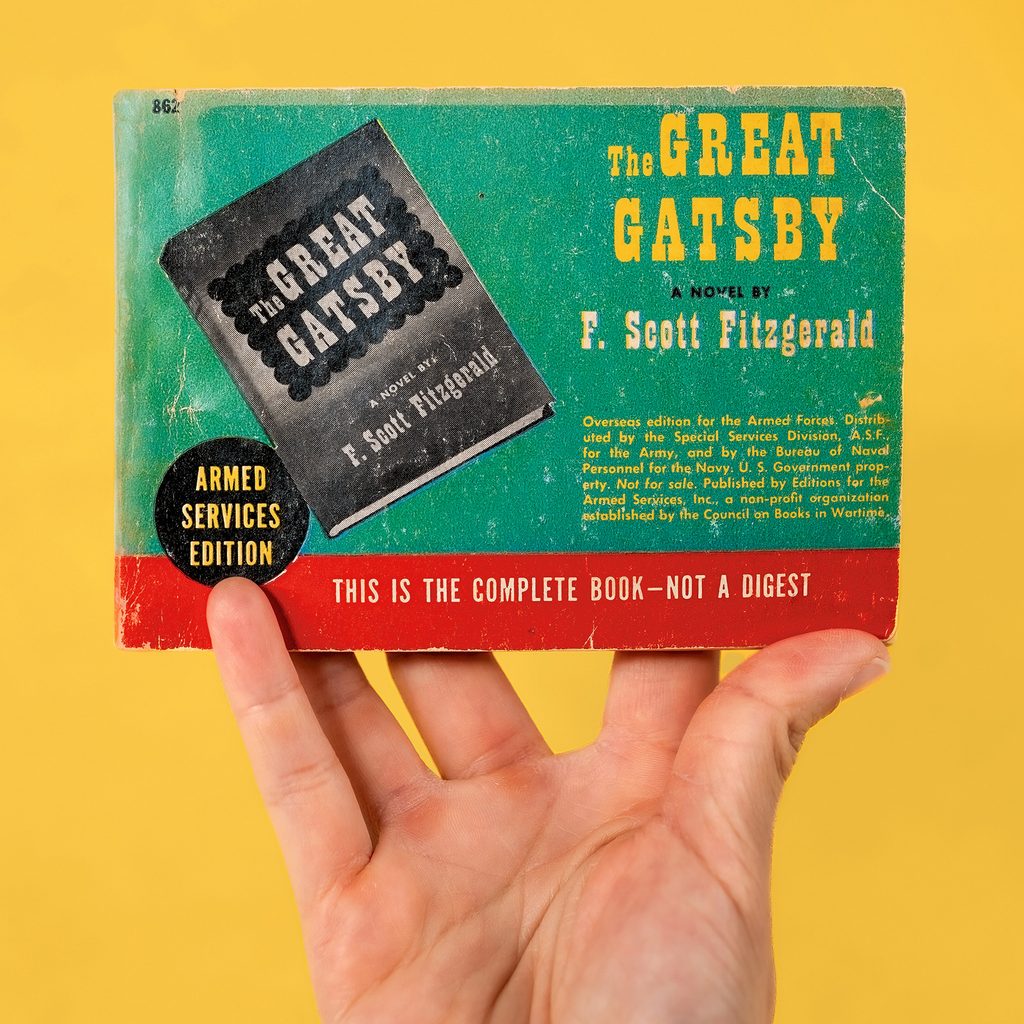As it turns 100 this year, The Great Gatsby remains one of the most revered American books, ranking second in the Modern Library’s list of the 100 greatest novels of the twentieth century. But it wasn’t always so. Published just before the Great Depression rendered its tale of the ultra-rich less relatable, Gatsby sold fewer than 25,000 copies by the time F. Scott Fitzgerald died, in obscurity, in 1940. But a curiously shaped paperback version of the book played a key role in reviving interest in Gatsby.

In 1942, the Council on Books in Wartime formed, unified in opposition to Nazi book burnings, under the motto “Books are Weapons in the War of Ideas.” One of its signature projects was the Armed Services Editions (ASE), a program that printed and distributed free copies of 1,300 books, including Moby-Dick and The Grapes of Wrath, to U.S. troops overseas, some even delivered to POW camps and parachuted to GIs on the front lines. “It’s often described as the largest book giveaway in history because nearly 123 million books were distributed,” says Lloyd McBride Professor of English Michael Kowalewski. Among them were 155,000 copies of Gatsby, each sized to fit in fatigue pockets and estimated to have been read and passed along seven times. “The Armed Services Edition really helped move Fitzgerald from being a has-been to required reading.”
Noting that a first edition of Gatsby is one of the “jewels in the crown” of the Gould Library’s Robert and Carolyn Nelson Collection of rare books, Kowalewski asked that this ASE version be acquired, and a copy was found on eBay: “We had to have it,” he says. “It’s part of the publishing history that fed into the Fitzgerald revival.”
But what accounts for Gatsby’s staying power? A critique of the wealthy that might seem as germane in 2025 as 1925? “That may be part of it,” says Kowalewski, who notes that many students end up remembering one line: “They were careless people, Tom and Daisy—they smashed up things and creatures and then retreated back into their money or their vast carelessness or whatever it was that kept them together, and let other people clean up the mess they had made.”
More enduring, though, is Fitzgerald’s artistry. “In teaching Gatsby over the decades, I think students really just love the simplicity, the beauty, and the lyrical precision of Fitzgerald’s prose.”
Object Lessons is an occasional series highlighting instructional objects—not classroom tools like microscopes or spectrometers, but items that by their very objectness are instructive—used by Carleton professors
